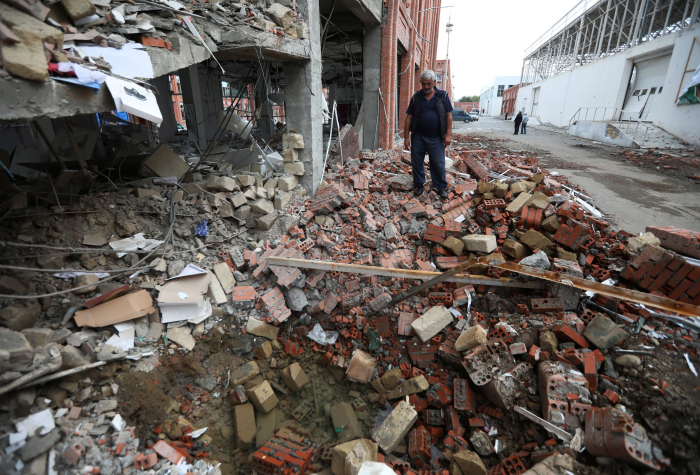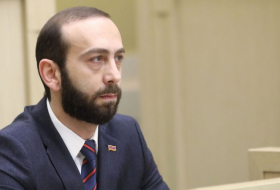As fighting intensifies between Armenia and Azerbaijan over the region of Nagorno-Karabakh, Washington’s silence is deafening. Domestic distractions are no excuse for the Trump administration to ignore a war that threatens to engulf Turkey, Russia and Iran, and place NATO partner Georgia in grave danger. Indeed, America is the sole power that can defuse the conflict and take a leadership role in a long-overdue peace settlement.
Fierce fighting between Armenia and Azerbaijan has not subsided since September 27, making negotiations more difficult with each passing day. Battles are taking place along the line of contact that has separated Azerbaijani and Armenian forces since the 1994 ceasefire. Armenian-controlled cities in Nagorno-Karabakh region have been shelled, including the capital Stepanakert, as well as Azerbaijani villages on the other side of the line of contact, with both sides reporting civilian deaths.
Armenian mid-range missiles have also hit civilian targets far beyond the conflict zone, reaching as far as the Absheron region near Azerbaijan’s capital Baku. Several missiles hit Azerbaijan’s second-largest city Ganja, located close to major oil and gas pipelines from the Caspian Sea to Europe. On October 6, Armenian forces reportedly fired a rocket targeting the Baku-Tbilisi-Ceyhan oil pipeline in Azerbaijan’s Yevlakh region. The rocket barely missed the oil pipeline and the nearby South Caucasus natural gas line, but the threat to major energy, transportation and communication corridors remains high.
Although Armenia blames Azerbaijan for shelling towns in Nagorno-Karabakh, the current military adviser to the Armenian prime minister, Vagharshak Harutyunyan, openly stated on Russian TV’s Vesti news program that the Armenian army is deliberately targeting the civilian population of Azerbaijan to create panic.
For 30 years, the two sides have not been able to settle the conflict. While Armenia has tried to retain its war gains, Azerbaijan has insisted on ending Armenian occupation of Nagorno-Karabakh and seven adjacent Azerbaijani districts — making up almost 14 percent of the country’s territory. Four United Nations resolutions and a UN General Assembly resolution have reaffirmed Azerbaijan’s territorial integrity calling on Armenia to withdraw its armed forces.
The warring sides already refer to the fighting as the second Karabakh war. The difference with the first war, however, is that both are now heavily armed with more sophisticated weapons, including missiles and drones that can inflict far more destruction. Armenia and Azerbaijan are among the most militarized states in the world, with both being primarily armed by Russia. Baku has also purchased drones from Israel and Turkey. Most recently, Russia has supplied military equipment to Armenia via Iran, causing the large Azeri population in Iran to protest Tehran’s assistance to Yerevan. Videos from Iran show attacks on trucks carrying Russian weaponry to Armenia amid increasing restlessness among the estimated 20 million ethnic Azeris inside Iran.
The Armenian media has blamed Turkey for the conflict, claiming that Ankara has sent Syrian fighters to help Azerbaijan and presenting Armenia as a defender against international terrorism. Prime Minister Nikol Pashinyan has also asserted that if Azerbaijan’s army succeeds it would mean genocide for the Armenians of Nagorno-Karabakh, referencing the genocide committed by the Ottoman empire in 1915. He omitted the fact that 30 years ago it was Armenian forces that committed the ethnic expulsion of almost one million Azerbaijanis from Nagorno-Karabakh and its surrounding regions.
Although Turkey has expressed strong support for Azerbaijan’s attempt to regain its territory, there is no evidence that Ankara is actively assisting Baku militarily. Ankara claims that a small number of Turkish F-16 warplanes stationed in Azerbaijan are not involved in the fighting, while the joint military drills that took place during the summer are routine events and much smaller than Russia’s multi-national Kavkaz 2020 exercises in southern Russia and Armenia.
Moscow has been surprisingly reserved since the conflict erupted and may be banking on a short war that will make both sides even more dependent on Russia. Russian President Vladimir Putin has emphasized that Moscow’s military agreement with Yerevan only applies to the territory of Armenia. Kremlin spokesperson Dmitri Peskov elaborated that Russia’s obligations under the Collective Security Treaty Organization (CSTO) do not extend to Karabakh. Faced with Moscow’s subdued response, Armenian Prime Minister Nikol Pashinyan stated that Yerevan could make concessions over the Nagorno-Karabakh region if Azerbaijan was ready to do the same.
Washington now has a valuable opportunity to begin decisive international mediation not only to stop the armed conflict but also to negotiate a durable settlement. Previous formats, including the OSCE Minsk Group, co-chaired by Russia, France and the U.S., have obviously failed to resolve the conflict. While France is a weak party without the full force of the European Union, Russia has exerted an inordinate influence in the process and prefers to keep Armenia and Azerbaijan embroiled in a permanent dispute that serves its ”divide and rule” policy. U.S. leadership, with support from the EU and NATO allies, can not only defuse the war, it can also prevent the region from falling under even more pernicious Russian and Iranian influence.
Janusz Bugajski is a senior fellow at the Center for European Policy Analysis (CEPA) in Washington D.C. Margarita Assenova is a senior fellow at the Jamestown Foundation. Their recent book is entitled “Eurasian Disunion: Russia’s Vulnerable Flanks,” Washington, D.C.
Read the original article on the Hill.
More about: Azerbaijan Armenia
















































